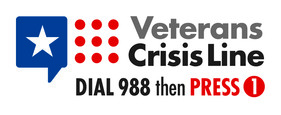
VA Medical Center in Long Beach, California (Photo: VA Long Beach Healthcare System)
The VA is proposing a $369.3 billion spending plan for fiscal 2025, a 12% increase from the previous year. Despite the increased overall budget, the VA anticipates a reduction in staff numbers for 2025.
The budget proposal includes an allocation of nearly $25 billion for a toxic exposures fund, aimed at compensating Veterans who have been diagnosed with medical conditions resulting from exposure to burn pits, radiation, and other environmental hazards. VA Secretary Denis McDonough stated the budget’s focus is on his top priorities, citing funding for health care, disability compensation, and facility maintenance.
The proposed budget requests 448,170 full-time employees, which is 10,000 fewer than the estimates for 2024. The majority of these staffing reductions are expected within the Veterans Health Administration. Areas such as medical services, medical support, and medical facilities are identified for decreases in funding. However, specific details regarding the impact on salaries and wages due to staffing reductions were not provided.
The projected cost to deliver medical care in 2025 is expected to be $138.6 billion, down from the estimated cost of $142.5 billion in 2024. This projected cost encompasses both mandatory and discretionary spending. Additionally, the budget allocates $2.8 billion for updating and improving VA health care facilities, including aging hospitals.
A significant portion of the VA’s budget, totaling $210 billion, is allocated for mandatory funding, covering various programs such as disability compensation, healthcare, housing, pensions, and insurance. The proposed budget includes an additional $25 billion for the toxic exposures fund, mandated by the PACT Act. This act, enacted in August 2022, requires the VA to provide health care services and payouts to Veterans affected by toxic exposures.
Mandatory funding is anticipated to exceed $235 billion in 2025, a substantial increase of 21% from the previous year. The VA expects to provide disability compensation benefits to 7 million Veterans and their survivors, along with administering pension benefits to over 224,000 Veterans and their survivors. The budget also prioritizes efforts to end homelessness among Veterans, with $3.2 billion allocated for various programs, including a voucher program in partnership with the Department of Housing and Urban Development.
Funding for mental health care is proposed at approximately $17 billion, with $13.7 billion designated for Women Veterans’ health services. Suicide prevention efforts also remain a priority, with $583 million allocated for programs such as the 24-hour Veterans crisis hotline and outreach programs — a $11.6 million increase from the previous year. The VA highlights suicide prevention as its primary clinical priority, stating the importance of these resources in supporting Veterans’ well-being.












